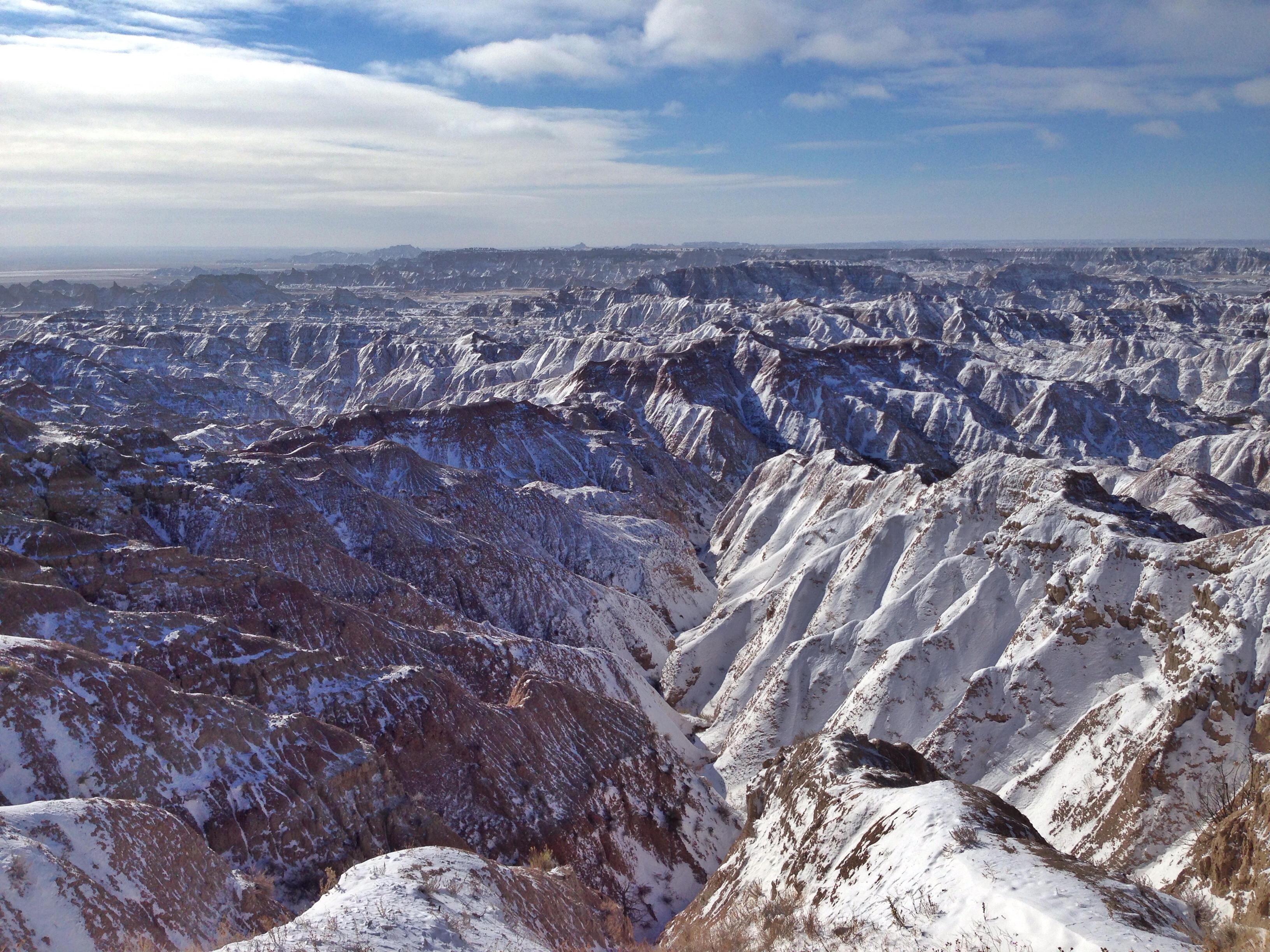

Mostly, however, the Badlands are characterized by colorful spires and pinnacles, massive buttes and deep gorges. There are just 13 named mountains in Badlands National Park. But at its edges, the mesa drops sharply to reveal incredible eroded flanks and expansive views of remote ridges and spires. Sheep Mountain Table is long, broad, and flat. One of the most popular attractions in this area is the Sheep Mountain Table - a large mesa. Visitors hoping to explore the Stronghold District have to obtain permission from individual landowners prior to crossing their land. The land was once used by the United States Air Force as an aerial gunnery range during World War II but is now comprised of land on the Pine Ridge Indian Reservation. The Stronghold District, which is also known as the ‘South Unit,’ is a wild and remote region of the park with few paved roads.

The Oglala Lakota have called the Badlands home for more than 11,000 years. Today, the National Park Service manages the park, while the South Unit is co-managed with the Oglala Lakota Sioux tribe – a Native American tribe that lives on one of the largest Native American reservations in the United States. Almost 40 years later, in 1978, the park was re-designated as a national park. Surprisingly, erosion continues to carve the Badlands buttes today and eventually, the park’s otherworldly features will completely disappear.īadlands was designated a National Monument in 1929 but was not established until 1939. The park’s incredible geological deposits contain one of the world’s richest fossil beds and were formed by 69-million-year-old geologic forces of deposition and erosion. The park’s sharply eroded buttes and pinnacles, however, are what draw visitors from around the world. Prairie animals have adapted to survive climate extremes and thrive in this vast, open space. This dynamic area houses 39 mammal species, 9 reptile species, 6 amphibian species, 206 bird species, and 69 butterfly species. There are 60 different kinds of grasses found within this complex ecosystem. The mixed grass prairie is a transitional zone between the tall-grass prairie to the east and the short-grass prairie to the west.


 0 kommentar(er)
0 kommentar(er)
